Woodland Avenues
The path continues southwards, round the Big Lake, before turning eastwards again to return to the house. Various diversions add to the interest of the woodland through which the path now passes, by means of a series of broad avenues.
These are flanked by tall Lombardy poplars, fast-growing, short-lived species, chosen to replace the elms that, stricken by disease, have had to be felled.
In time, slower growing trees will replace the woodland canopy, edged by fastigiate beech and oak, wild cherry and Acer capillipes.
The avenues are interrupted by sheltered roundels: one has a fine marble vase containing the ashes of the 2nd Lord Faringdon; a second is a variegated holly circle which now has five pairs of obelisks, each pair marking an exit, and a new central obelisk/sundial designed by Sir Mark Lennox-Boyd to commemorate the Diamond Jubilee of Queen Elizabeth II, with the hieroglyphic carvings on the slate faces by Fergus Wessel's company, Stoneletters (see https://stoneletters.com/blog/buscot-park-obelisk-sundial); a third, known as the Citrus Bowl, consists of a delightful sunken circle, with an Italian wellhead with skeletal pyramid by David Harber composed above it and flanked by citrus trees, grown in pots to allow their removal in winter. Last of all comes the circular Swinging Garden, a place of fun after the preceding formality, where grown-ups are tempted to revisit their childhood by swinging gently on the chain-suspended garden seats placed around the perimeter of this sunny circle.
Arriving back at the Theatre Pavilion, to the east of the house, there are fine vistas back down through the goose-foot of tree-lined avenues and garden enclosures laid out by the 2nd Lord Faringdon in the 1930s.
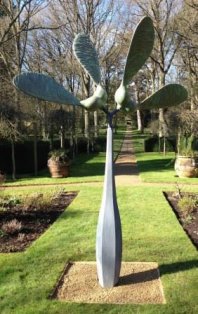
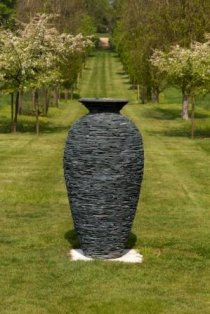

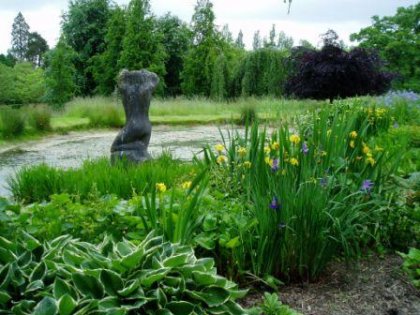
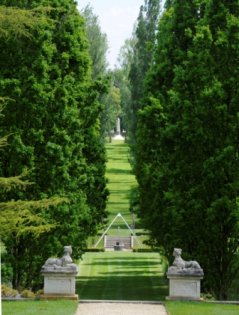
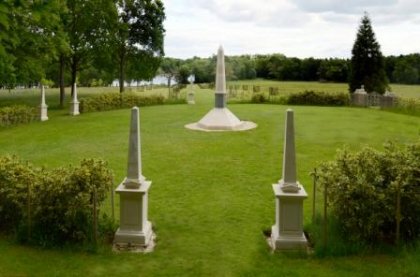
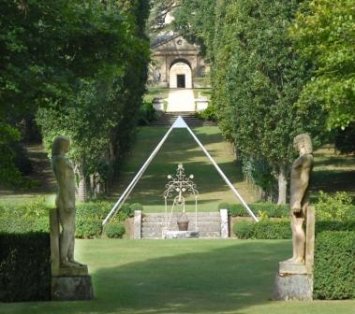
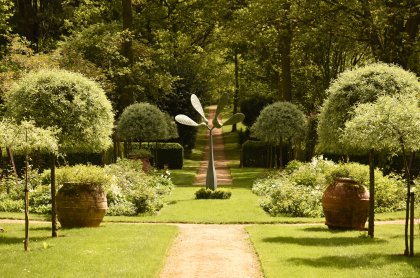








 = House & Grounds Open
= House & Grounds Open = Grounds Open Only
= Grounds Open Only = Closed
= Closed

 >
>